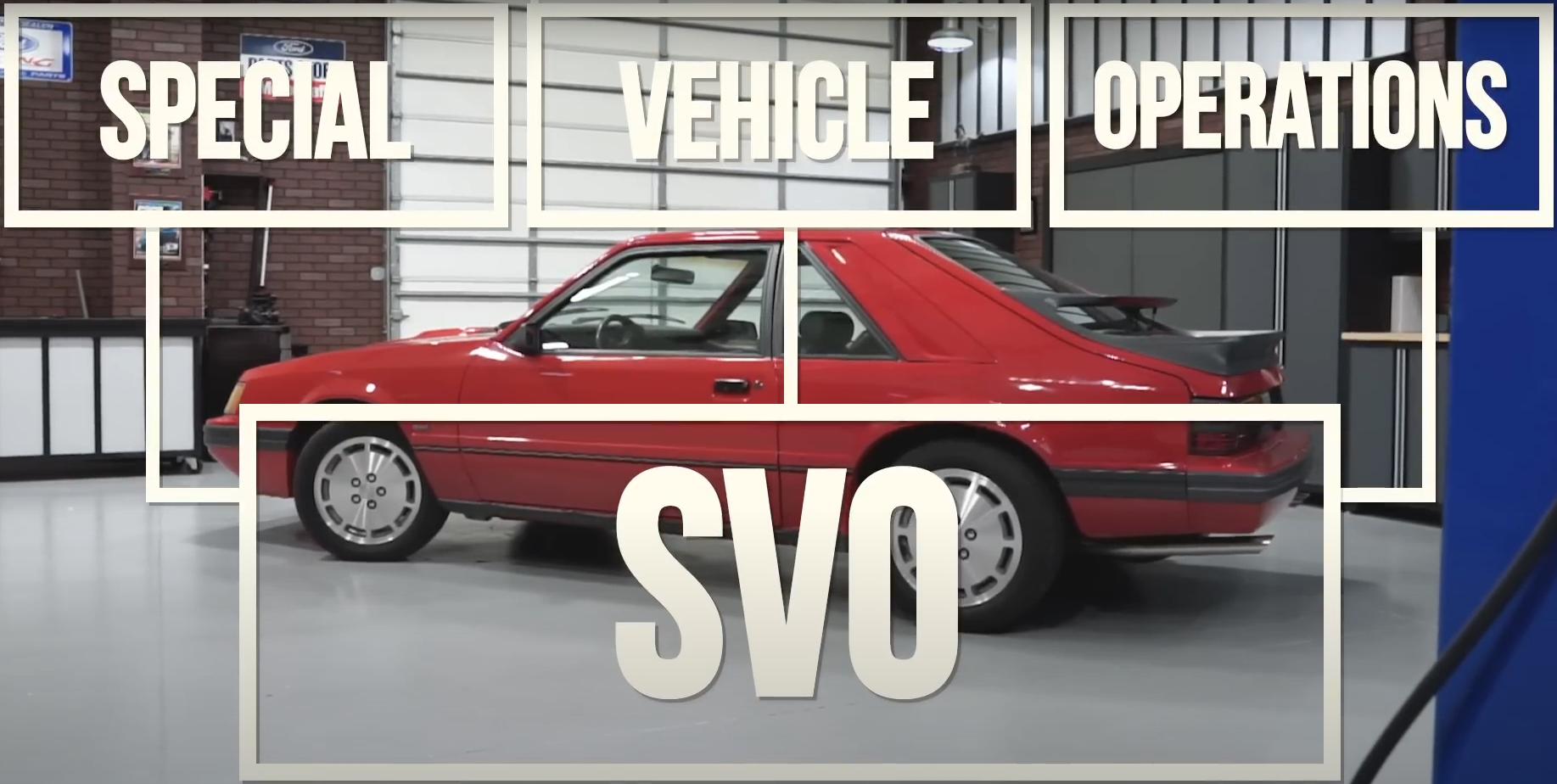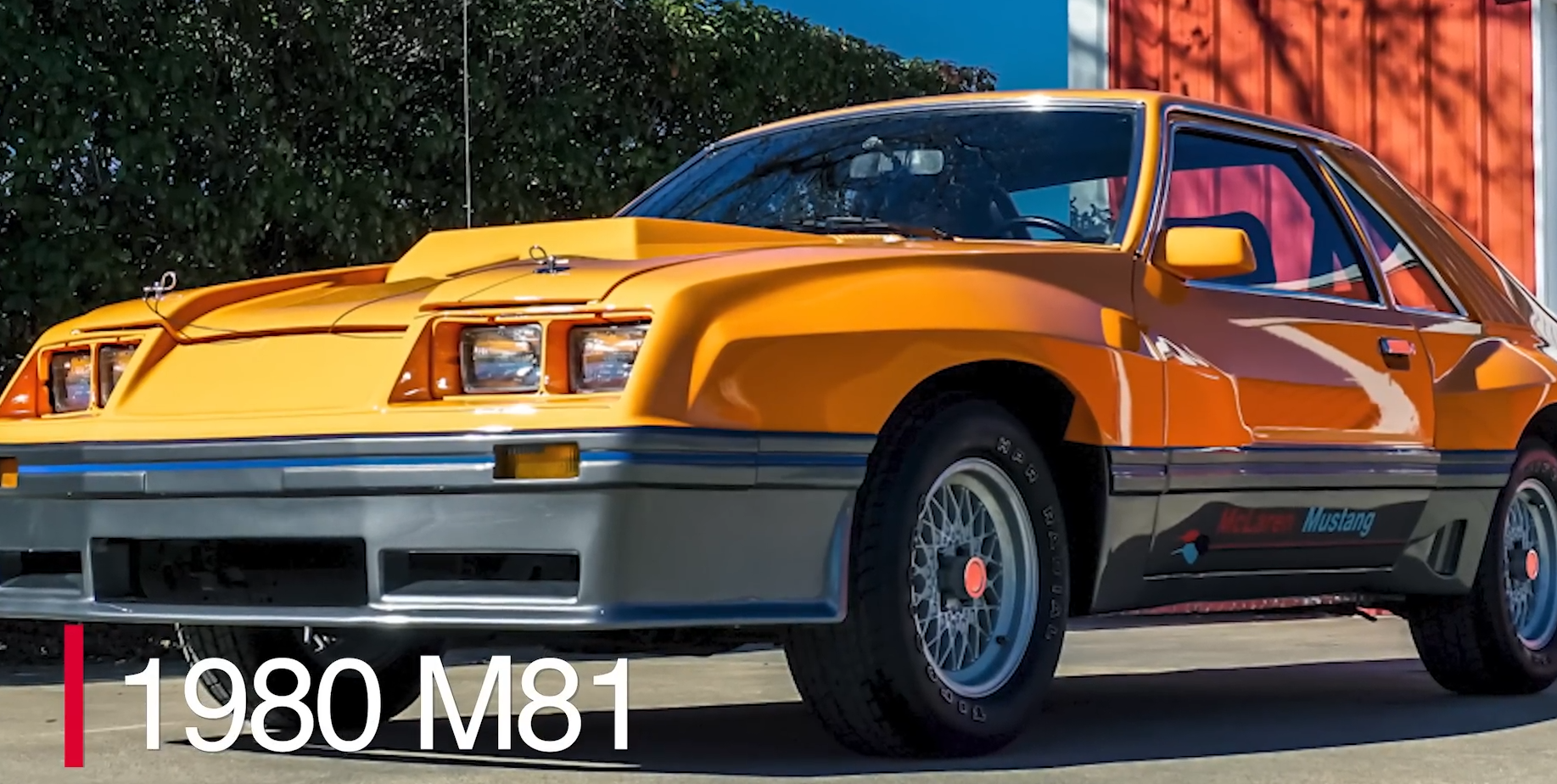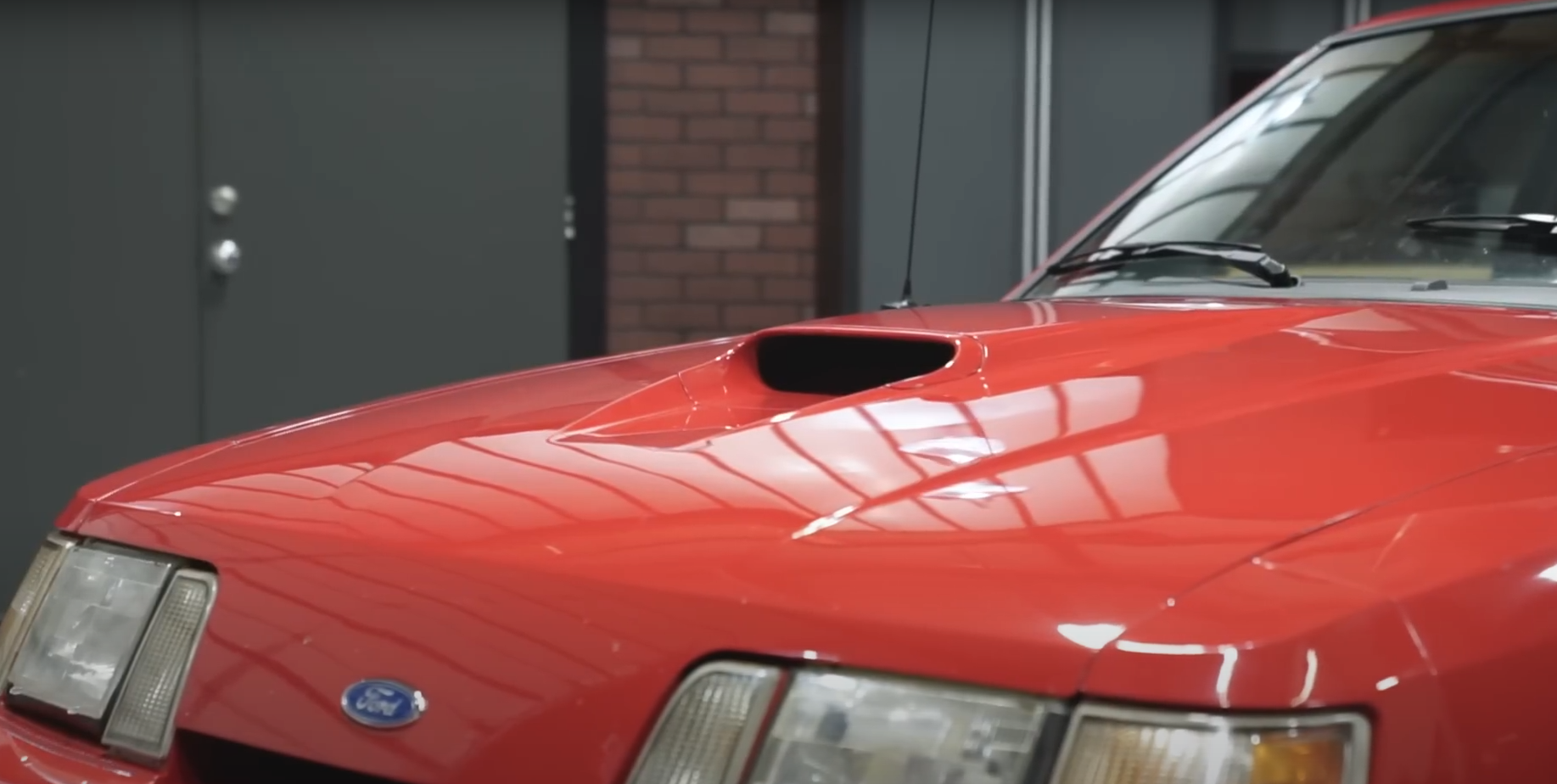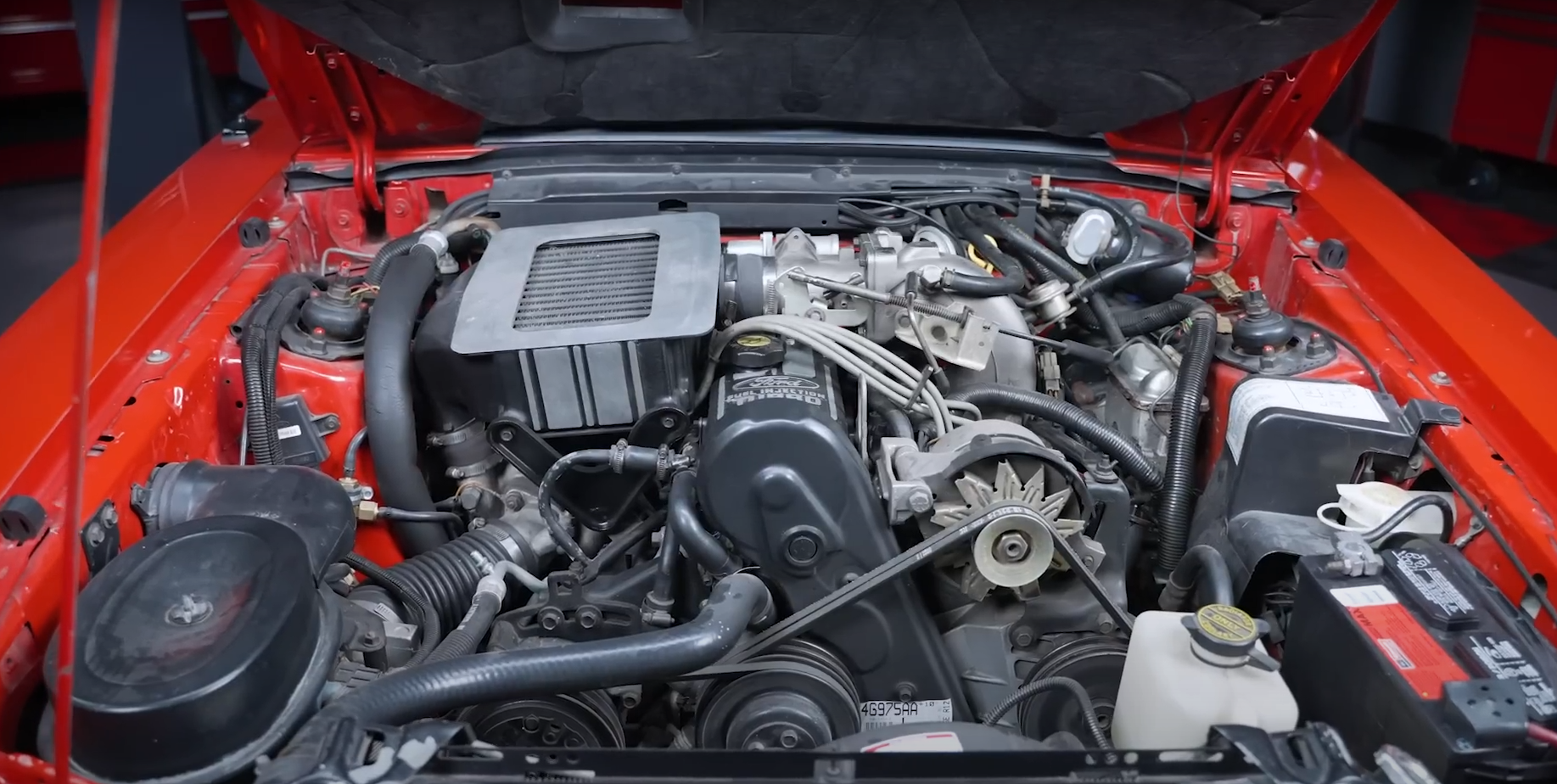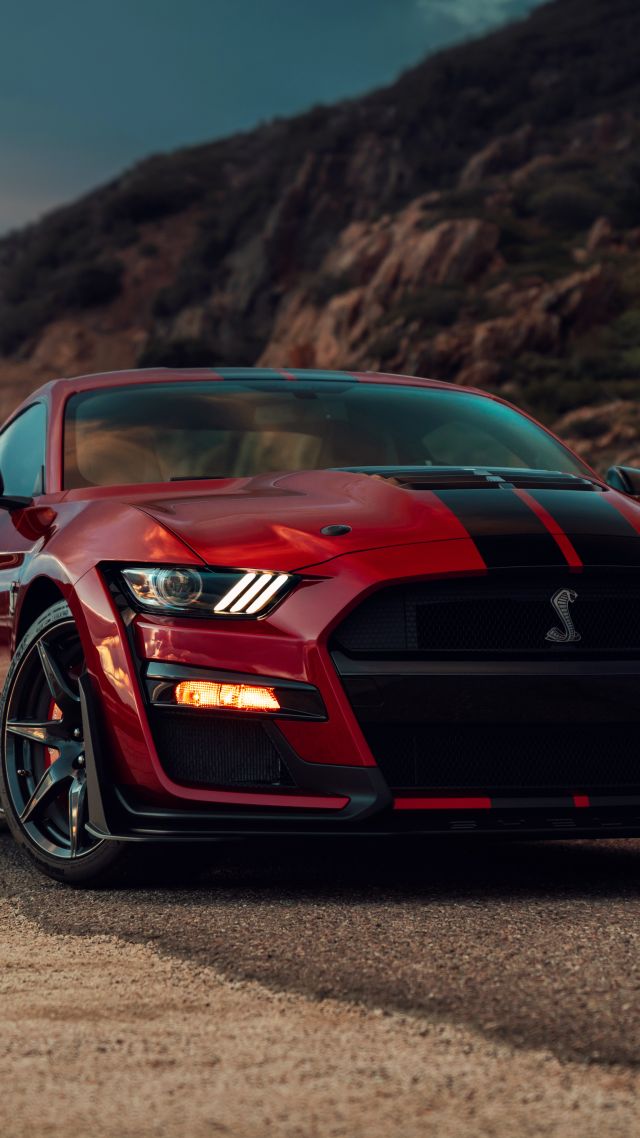The Ford SVO Mustang stands out as a special chapter in car history. Designed in the early 1980s, it marked a time when Ford wanted to return to racing and build unique, limited-production cars, shifting focus from traditional V8 power to a turbocharged four-cylinder engine. This model brought new design choices and noticeable changes inside and out, which set it apart from other Mustangs of its era.
Throughout its short production run, the SVO gained features like a distinctive hood scoop, special wheels, and a European-inspired rear wing. Inside, it came with upgraded seats, a unique steering wheel, and more driver-focused controls. The SVO also introduced technical advances that would influence future models and leave a lasting impression on Ford’s legacy.
Key Takeaways
- The SVO Mustang blended racing ambitions with unique style and technology.
- Its design, interior, and engineering set new standards for Ford performance cars.
- The SVO’s limited run and special features created a lasting market impact.
Ford SVO: Development Over the Years
How Ford’s Performance Team Began
In the early 1980s, Ford signaled a renewed interest in motorsport activities. By September 1980, they introduced a group called Special Vehicle Operations, led by Michael Cranfit, who was already known for his experience in European racing contests. The purpose of this team was to design special edition vehicles connected to competitive racing. SVO started with a focused mission and clear leadership from the beginning.
Prototype Cars and Lessons from Racing
Once the new group was formed, engineers quickly moved forward with a Mustang concept for IMSA racing. This car used a turbocharged four-cylinder engine that was heavily upgraded. The main goal was to take part in key races for the 1981 season. SVO’s prototype Mustangs competed in endurance events, learning from other popular competitors like the Camaro Z28 and Porsche 944. Their efforts during these races provided valuable information to make their cars better.
Noteworthy Facts
| Year | Event Type | Notable Competitors |
|---|---|---|
| 1981 | IMSA events | Porsche 944, Camaro Z28 |
| 1982 | 24-hour endurance race | 280ZX Turbo, RX7 GSL |
The McLaren Mustang and Its Impact
Ford teamed up with McLaren to produce the M81 Mustang. This car included a turbocharged 2.3-liter engine built by McLaren, adjustable boost controls, and many upgrades usually found in racing cars. The original plan was to create 250 hand-built cars, but the high cost—$25,000, which was a lot at the time—meant only 11 were actually made. The M81 project helped Ford test new technology, even if it was not a commercial success.
Key Upgrades on the McLaren Mustang:
- Variable boost control (5 to 11 psi)
- Koni shocks and improved springs
- Upgraded brakes and sway bars
Move to Full-Scale SVO Mustang Production
By 1982, Ford’s engineers shifted their attention to putting SVO features into regular Mustangs. They built new prototypes with engines tuned by Jack Roush and tested them in long-distance races. These tests improved car features and helped Ford decide what changes were ready for customers.
When the SVO Mustang became available in late 1983 for the 1984 model year, it included many performance upgrades: a turbocharged engine, special body parts, unique wheels, and a new style inside the car. Production lasted until 1986, and each year saw small changes based on feedback and testing.
Main Features Added to Production SVO Mustangs:
- Turbocharged 2.3L Lima engine
- Four-wheel disc brakes
- Five-lug wheels
- Custom interior seats and trim
The SVO project showed Ford’s commitment to racing technology and performance, bringing those ideas into cars regular people could buy.
Style and Outside Details
Front End and Hood Highlights
The SVO Mustang’s front had a one-of-a-kind hood with a scoop set to the side. This scoop was made to bring cool air into the intercooler. It also had a special front bumper that wrapped around and took away the front spat. The fog lights were made by Marshall and sat in the lower grille.
At first, the headlights were set back, but in mid-1985, Ford changed them to smooth flush-style lights. These new lights gave the SVO a more up-to-date look.
Side Stripes, Moldings, and Finishing Touches
Instead of the big side moldings found on other Mustangs, the SVO got slim, center-line moldings that went all the way down the side. In 1984, the trim color was black. For late 1985 and 1986, it turned to charcoal gray, which is often called SVO gray today.
At the bottom of the body, there were special rocker trims that led to extra-kicked spats by the tires. SVO-only color panels filled the area behind the quarter windows, and the roof rail moldings matched the paint of the car.
Rear Wing and Back End Appearance
All SVOs came with a European-inspired two-level rear wing, except for 1986 when it could be left off if the buyer wanted. The wing was a standout feature that couldn’t be missed.
Standard Fox Body tail lights were used but added a color pinstripe. The 1984 SVOs used black striping, while SVOs after that got gray. The same tail light style came back years later on the 1993 Cobra.
SVO Nameplate and Paint Selections
Badging for the SVO changed over the years. Early 1984 cars got SVO stickers on the hatch and side fender. The 1985 models dropped them from the fender, but kept the SVO badge on the hatch. By 1986, the SVO badge was placed on both the fenders and the hatch.
Color choices in 1984 included black, silver metallic, medium canyon red, and dark charcoal metallic.
Cabin Details and Practical Design
Seating Comfort and Upholstery Choices
The SVO model came with Lear Siegler seats that had large side supports and adjustable lumbar support. Cloth upholstery was standard, but there was also an option for leather.
Earlier 1984 and some 1985 cars used seat piping for trim, while later models switched to a “dove stitch” pattern. The same cloth used on the seats was added to the door panels, even if the seats themselves were leather.
Key Details:
- Standard Lear Siegler seats, large bolsters
- Pump up lumbar support
- Cloth or leather options
- Trim changed from piping to dove stitch after early 1985
- Matching seat and door panel material
Pedal Setup and On-Road Feel
The SVO featured a unique pedal layout that used a brake pedal from automatic Mustangs, making heel-toe driving easier.
It was also the first Fox Mustang model to include a dead pedal for added driving comfort.
Highlights:
- Brake pedal borrowed from automatics for better control
- First Fox Mustang with a dead pedal
Cabin Tones and Surface Treatments
The SVO’s interior color, referred to as charcoal gray, was used throughout the cabin. Unlike other Fox Mustangs, the SVO did not have black trim around the center console.
All trim areas near the console were finished in the same dark gray color for a unified look.
Notable Points:
- Consistent charcoal gray interior
- No black console accents—everything was dark gray
- Interior called charcoal gray by Ford
Steering Controls and Dashboard Design
A leather-wrapped steering wheel with the SVO logo was used, along with a unique horn pad. The instrument cluster had red backlighting, and the gauge faces along with the passenger side dash had a suede-like finish.
A Hurst shifter and specific shift knob and boot were also fitted.
Feature Table:
| Feature | SVO Interior Specification |
|---|---|
| Steering Wheel | Leather wrapped, SVO logo |
| Instrument Cluster | Red backlighting, suede-like finish |
| Shifter | Hurst, unique knob & boot |
| Horn Pad | SVO specific design |
Frame and Ride Setup
Stopping Power and Brake Details
The SVO Mustang was fitted with four-wheel disc brakes, the first of any production Mustang to do so. The front brake rotors measured 10.91 inches, and the rear vented rotors were 11.25 inches. The front calipers had 73 millimeter pistons, which became a popular upgrade for later Fox Body models.
Table: SVO Mustang Brake Specs
| Position | Rotor Size | Caliper Piston |
|---|---|---|
| Front | 10.91 inches | 73 mm |
| Rear | 11.25 inches | Vented disc |
SVO Wheel Design and Placement
SVO models came with their own unique five-lug wheels. They measured 16 by 7 inches and were mounted with 225/50/16 Goodyear Gatorback tires. Because of the larger brakes and wider track, these wheels had a special offset to fit just right. The use of five-lug wheels set the SVO apart from other Fox Body Mustangs of its time.
- Wheel size: 16×7 inches
- Tire size: 225/50/16
Lower Suspension Arms and Wider Front End
The SVO featured unique front lower control arms with built-in, non-replaceable ball joints. These special control arms made the SVO’s front track wider than other Mustangs, which improved handling and stability. The car also came with sway bars measuring 1.12 inches in the front and 0.67 inches in the back.
Adjustable KONI Dampers
The SVO Mustangs were equipped with adjustable KONI shocks and struts. Over time, these became known as “KONI Reds.” These adjustable dampers gave drivers the ability to fine-tune how the car handled on the road or the track, which was rare in cars from that era.
- Front and rear KONI shocks
- Fully adjustable settings
Powertrain and Capabilities
Turbo Four-Cylinder Lima Motor
The SVO’s heart is a 2.3-liter turbocharged Lima engine. This motor uses a single overhead cam design with two valves per cylinder. Compression is set at 8:1. Intake valves measure 1.73 inches, and exhaust valves are 1.49 inches.
Ford chose a turbocharged layout to give the car strong performance without a V8. The turbocharger is an Air Research T3 unit, which feeds air through the engine for extra power.
Engine Details and Output
| Model Year | Horsepower | Torque (lb-ft) | Turbo Housing | Boost Pressure |
|---|---|---|---|---|
| 1984 | 175 hp | 210 | T3 (0.63 A/R) | 14 psi |
This output made the SVO’s engine as strong as the 1984 Mustang GT’s 5.0-liter V8. The engine was made to handle more pressure and had special internal parts.
The SVO stood out for its power, especially coming from a four-cylinder block. Even though most Americans preferred V8s at the time, the turbocharged setup provided solid acceleration and response.
Turbo Control and Engine Electronics
The SVO uses Ford’s EEC-IV electronic control unit, which manages engine functions. A key feature is the adjustable boost controller, located inside the car. This lets the driver change boost pressure, depending on engine needs or fuel quality.
There is also a fuel switch that helps the engine adapt to low or high-octane fuels. When set for premium, the system allows more boost and better performance. The electronics support reliability and help deliver the right balance between power and efficiency.
Production Timeline and Yearly Differences
1984 Launch and Features
In 1984, the SVO Mustang made its debut. This year, buyers could pick from several exterior colors, including black, silver metallic, medium canyon red, and dark charcoal metallic. Only 4,507 units were made during this first year.
The car came with a turbocharged 2.3-liter engine, delivering 175 horsepower and 210 lb-ft of torque. Both the horsepower and torque matched the numbers of the 1984 5.0-liter V8 Mustang GT. The price tag was about $16,000, which was almost double what the GT cost at the time.
Other unique features for 1984 included:
- SVO sticker on the hatch and fender
- Black exterior trim
- Standard cloth seats, with leather as an option
The turbo used was an air research unit with a T3 housing, able to produce up to 14 psi of boost. An electronic control system managed the engine, and a fuel switch allowed adjustment based on the type of gasoline.
| Year | Units Built | Engine | Horsepower | Torque | Special Trim Color | Exterior Badges |
|---|---|---|---|---|---|---|
| 1984 | 4,507 | 2.3L Turbo | 175 | 210 | Black | Hatch and fender sticker |
Mid-Production Changes in 1985
For 1985, both minor and mid-year updates appeared in the lineup. Exterior trim was switched to charcoal gray, a feature later known as SVO gray. The SVO badge was now present only on the hatch, with nothing on the fenders.
Early 1985 cars kept the piped seat trim, while 1985.5 models switched to dove stitching. Ford also updated the headlights in mid-1985, moving from the recessed style to more aerodynamic, flush-mounted units.
A summary of key changes for 1985:
- Charcoal gray exterior trim
- SVO badge limited to hatch only
- Flush-style headlights appeared mid-year
- Transition from piped to dove-stitched seat trim
1986 Model Adjustments
In 1986, Ford made more tweaks to the SVO. The biplane rear wing became optional and could be deleted if chosen by the buyer. SVO badges were now found on both the fenders and the hatch.
Interior details followed previous upgrades. The dove-stitched seat trim continued from the 1985.5 update. The taillight trim stayed in charcoal gray, matching the overall look.
Main updates in 1986:
- Optional biplane wing
- SVO badges on fenders and hatch
- Continued charcoal gray trim
- Dove-stitched seat trim
These changes helped keep the SVO Mustang distinct during its brief three-year production run.
Influence and Marketplace Results
The SVO Mustang left a distinct mark on car design and performance during its short production run from 1984 to 1986. It was the first Mustang to feature four-wheel disc brakes and unique five-lug wheels, making it stand out in the Fox Body lineup. Over time, the SVO’s brake calipers became a popular upgrade for other Fox Mustangs due to their larger 73-millimeter pistons.
Key Features and Innovations:
| Feature | SVO Mustang Contribution |
|---|---|
| Brakes | First Mustang with 4-wheel disc brakes |
| Wheels | Exclusive 16×7-inch 5-lug alloy wheels |
| Suspension | Adjustable Koni shocks as standard |
| Design | Distinct body moldings and biplane wing |
| Interior | Special seats and unique dash styling |
Sales were limited compared to standard Mustang models, with only 4,507 units built in 1984, and low production numbers in later years. The higher price and use of a turbo four-cylinder engine instead of a V8 meant the SVO had a smaller audience in the U.S. market. Despite this, it is respected for its engineering and its role in introducing European-style performance features to American sports cars.
Notable Impacts:
- Brought European motorsport influence into Ford’s lineup
- Inspired brake and wheel upgrades among Mustang enthusiasts
- Demonstrated new levels of handling and tuning options for the era
The SVO Mustang’s combination of technology, style, and handling makes it an important, if niche, chapter in Mustang history.


